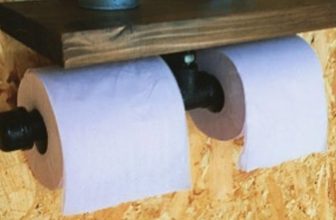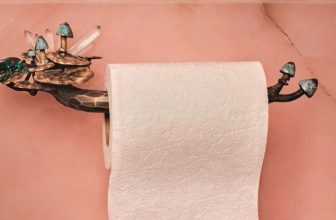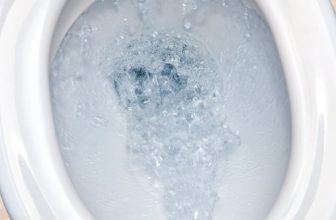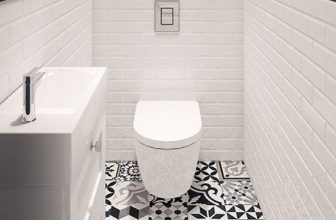Shape matters everywhere, and with toilet bowls too. If you can efficiently flush with less water than before, it’s partly due to the toilet jet holes that direct the water around the rim and then down to the bottom.
To clean the siphon jets in a toilet, fill the tank with 1 gallon of pure vinegar. Let it sit there for as long as possible (24 hours is good enough to clean the rim holes). The vinegar will clean the bowl as it goes down. Do not flush for at least 2 hours.
Though they mostly contact clear water, they still can get dirty and clogged. If it happens, it prevents efficient flushing, so you might need to flush twice or even more. So, knowing how to clean toilet jets (how to clean toilet siphons) is essential for the art of toilet maintenance.
Guide on How to Clean Toilet Jets
Why do we clean toilet jet rims? Not just to keep it shiny: these are some places no one cares to see. But if you don’t know how to clean under the toilet rim all around, this ignorance can lead to a weaker flush and dirtier toilets. Cleanliness matters here as well.
What rim jets are for?
Look inside your toilet bowl. Have you ever wondered why its rim edges are bent like this? The answer comes if you flush and see how the water distributes. Instead of flowing in one stream, as it does from a bucket, in a toilet, the water flows down from under the entire rim.
That happens due to the toilet jet rims designed to maximize the effect of water washing down the waste. With toilet jets clogged, flushing gets weaker, and these clogs are the perfect place for various bacteria. Not so hygienic to contact with your naked skin, huh?
How to tell if jets are clogged?
The most obvious way seems to try it with your finger, but it is not hygienic enough to discuss it seriously. In addition, your finger doesn’t have an eye on the tip, so this isn’t informative either.
You can tell the jets are clogged if the stains become visible and go down below the bend of the rim. They can be hard to see, being rather shades than colored stains, but if you have good lighting in the toilet, they are visible.
An even more obvious way to tell that you need toilet siphon cleaning is to notice that flush works worse than before. It cannot wash away your usual volumes of waste, and sometimes you have to repeat the flush. In fact, this is the consequence that matters.
As for bacteria, you would rather not check whether there are any. Let’s state that there always are. The more colonies they form, the more damage they can do to the toilet, the bathroom, and your health. So, antibacterial measures are always necessary; you don’t even need to check.
Cleaning toilet jets from bacteria: Step-by-step guide
While there are numerous antibacterial cleaners at any store, there are easier and cheaper ways to take your regular antibacterial measures. (A spoiler: you will still need some chemical bowl cleaner, but you probably have some already).
As I have stated there are always some bacteria, you better make this a recurring procedure – say, twice a month. So, this is how to clean toilet jets from bacteria with the most affordable means.
- Take a regular bleach and make a solution: 1 part bleach, 10 parts water. It usually takes just a cup of the solution, so the bleach should be about 1/10 of the cup.
- Open the tank by removing the lid.
- Pour the solution into the overflow tube (usually, it’s in the center of the tank).
- Let it remain there for about five minutes, and then flush to drive the solution into the bend of the rim and all over the jets. After flushing, wait about five more minutes.
- Take a piece of wire to clean the siphon jet hole in the toilet manually. Don’t forget to put the gloves on! You can use a hand mirror (or your phone camera with zoom if you’re a gadget person) to check how well you have cleaned the holes.
- Take a chemical bowl cleaner and a scrubbing pad and clean around the jets.
- Make one more cup of bleach solution and pour it into the overflow tube; then wait for five more minutes.
- Flush for the final time.
As we are speaking about bacteria, hardly will you see any result immediately with your own eyes (except your bowl will shine a little brighter). Still, this procedure works, so don’t forget to repeat it about twice a month.
Cleaning toilet jets from mineral deposits: Step-by-step guide
It depends on the quality of your water how soon mineral deposits will become a real problem. But you will know it when you see it. If you notice your flush losing its strength, it’s time to apply some special treatment.
There are many specialized cleaners around, but sometimes popular substances that are found in every kitchen work just as well.
Some recommend the option to clean toilet jets with vinegar. This method might seem rather aggressive (partly because the vinegar has to be hot), but it has proven its efficiency.
It resembles the way you clean the toilet bowl from bacteria (probably, most bacteria won’t survive this vinegar attack either), though there is some difference.
- Take about a cup of white vinegar and boil it.
- Open the lid of your toilet tank.
- With a funnel, pour the hot vinegar into the overflow tube.
- Wait for about an hour.
- Take an Allen wrench (also known as a hex key; you might have kept some that came with furniture pieces). How to remove the limescale from the toilet rim with it is intuitive. You can take other tools, but Allen wrenches are the best to reach there due to their shape. After the impact of the vinegar, the sediments will become removable. Be careful to not damage the China surface, though.
- When you’re done all the way around, flush the toilet with simple water. This will remove the remains of limescale and dirt.
You can amplify the impact of the vinegar if you apply the duct tape all around the rim. This will prevent the vinegar from running down, so its concentration will remain stronger for that time.
This method is simple, but the smell of boiling vinegar might seem intolerable. There are other cleaners that work similarly. Some of them, though, are too aggressive to be used on plastic overflow tubes, so they need to be applied directly to the rim.
These cleaners for toilet siphons are easy to recognize by their labels as well as by the shape of their tops, bent in a special way to easier reach under the rim.
FAQ About How to Clean Toilet Jets
There are numerous methods of cleaning toilet jets, and I cannot cover them all. Yet, I can answer the most popular questions heard about that procedure.
Will CLR clean toilet jets?
There are products by CLR that are designed to remove sediments like those under the toilet rim. For example, one that is called Calcium, Lime, and Rust Remover (this is what CLR stands for) is directly meant for these purposes.
What is the black stuff under the toilet rim?
It may be the mineral sediments from the water. But chances are these are pieces of waste brought there by splashes of water. To clean toilet stains under the rim, use the same technique I recommend against limescale sediments.
Does WD-40 remove hard water stains in a toilet?
This spray is famous for its versatility, and yes, it does soften hard water deposits, but you don’t need to boil it or flush it down the overflow tube. Just spray it all around under the rim and wipe it after some time.
If you opt for WD-40 because of its reputation, you can purchase a can with a flexible straw that perfectly suits cleaning toilet jet holes (EZ-Reach). Use it to clean the jets or to reach under the rim bend.
How do you clean toilet siphons with duct tape?
Yes, duct tape is a good assistant if you use a method that assumes the usage of a cleaner through the overflow tube. But it’s not that necessary, especially with sprays that stay on the surface anyway.
Clean and Mean
Since modern toilets exist, users have been wondering how to clean toilet jets, and some methods are better recognized than others. The ones covered here have a good reputation and have been tried and approved by millions.
But, maybe, you know something as good or even better? I’d like to read about it in the comments. When describing your case, please, don’t forget to tell us what toilet you use and for how long.
This will help the readers to estimate whether it is helpful in their case. Thanks in advance!
Also read:
- Best Wall Mounted Toilets
- Best 1.6 GPF Toilets
- Best Macerating (Upflush) Toilets
- Best Tankless Toilets
- Best Rear Discharge Toilet
- How to Vent a Toilet Without a Vent
- Toilet Drain Pipe Sizes
- Toilet Wax Ring
- Why Does My Toilet Keep Running







